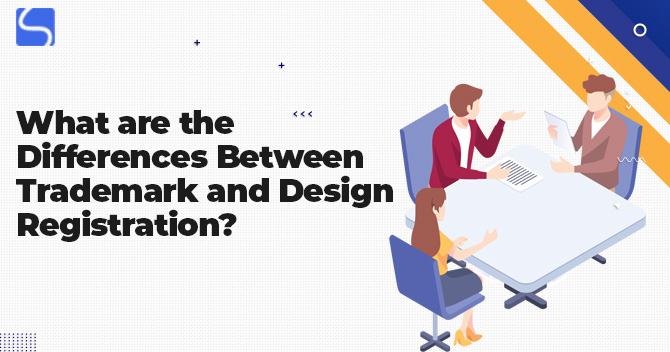A Complete Analysis of Assignment of Design Rights

Karan Singh | Updated: Mar 01, 2022 | Category: Design
Industrial Designs are part of the appealing section, but they are also used as a blueprint for the production of handcrafted/industrial goods. The appealing part of a practical object that must appeal to the sense of sight and may include the shape, colour, or pattern of the article is known as Industrial Design. For the Design Registration, an Industrial Design must be unique and new. For a time duration of 5, 10, or 15 years, Designs are safeguarded against illegal replication or duplication. In this blog, we shall discuss the Assignment of Design Rights.
Table of Contents
What is the meaning of Design?
Before we discuss the Assignment of Design Rights, let’s understand the meaning of Design and Assignment. According to Section 2(d) of the Designs Act, 2000, Design refers to only the features of shape, pattern, ornament, configuration, or composition of lines or colour or their combination thereof applied to any article, whether 2-d or 3-d or in both forms, by any industrial process or means, whether mechanical, manual, or chemical, separate or combined which is the completed article appeal to & are judged simply by the eye, but it eliminates any principle, mode, construction, as defined in Clause (V) of sub-section of Section 3 of the Trade & Merchandise Marks Act, 1958, artistic works or property mark as defined under Section 2(c) of the Copyright Act, 1957.
What is an Assignment?
The assignment is a legal term that refers to the transfer of property, rights, or other benefits from one individual to another (assignor). Both property law & contract law make use of this assignment term. The assignment term can relate to either the act of transferring or the transferred benefits, rights, or property.
Assignment of Design Rights
Section 30 of the Design Act, as amended by Rules 32, 33, 34 & 35 of the Design Rules, 2001, recognised contracts for the Assignment of Design Rights and set up a method for their recording. Section 30(1) of the Act facilitates that if an individual acquires the Copyright in a registered Design through transmission, assignments, or other legal means, he or she may apply to the Controller in the given form to register their title. As per Section 30(3) of the Design Act, 2000, an Assignment of Design Rights should be in written form, and the agreement between both the parties should be lessened to the form of an instrument personify all of the terms & conditions governing their rights & obligations, and the application for title Registration under such instrument should be filed in the suggested manner with the Controller within the specified time, i.e., 6 months of the execution date. The person registered as the Design owner has the exclusive right to assign their rights, as per Section 30(4) of the Design Act, 2000.
Only if the Copyright of Design is statutorily recognised under the necessities of the Designs Act is it protected. Similarly, 3rd party rights obtained via licenses or assignments are only effective if they are properly registered in accordance with the necessities of the Act and the Rules enacted thereunder. Under the Law of Design, there is no concept of a common-law license.
Assignment of Design Rights with the help of Agreements
Assignment Agreements deals with the transfer of IP Rights from one individual or company to another. An Intellectual Property Agreement is a documented & enforceable contract that completes & formalises a purchase and sale of IPRs between two organisations. Patents, Trademarks, and/or Copyrights are an example of Intellectual Property that can be purchased. Assignment Agreements differ from license agreements in that an Assignment Agreement transfers ownership of IP from the assignor to the assignee; on the other side, a licence agreement only permits the licensee to use the IP for a definite time.
An Assignment Agreement can’t be compared to a negotiating document since, in a negotiation, the transferee may get a superior title than the transferor, which cannot occur in a transfer or assignment. An Assignment Agreement may comprise an overall and exclusive sale of the rights, granting the assignee complete ownership of IPRs to exploit them in any way, shape, or form it sees fit, subject to any constraint set for the in the Assignment Agreement. These contracts are governed or regulated in India under the Indian Contract Act, 1972 & the Indian Stamp Act, Of 1899.
Process of Assignment of Design Rights under Design Act, 2000
- After Design Registration, an ownership application under Rule 33 of the Design Rules, 2001 should be made to the Controller for the title Registration in the new owner’s name;
- The agreement of Assignment of Design Rights should be written, and all of the parties’ concerns must be given in the form of the instrument, including all the terms & conditions, as per Rule 37 of the Design Rules;
- After all, necessities have been completed, and the Assignment of Design Rights will be enforceable from that date;
- Within 6 months of the implementation or execution date of the instrument, a title registration application should be submitted. This period can be extended for an extra 6 months.
Conclusion
The Design Act, 2000[1] and Copyright Act safeguard the rights of the actual designer & deal with the transfer of rights to succeeding owners. Section 30 of the Act and Rules 32-35 of the Design Rules, 2001 deal with the Assignment of Design Rights. If they are not written carefully as required by law, these agreements give birth to legal & equitable rights in law & raise a slide of concerns.
As a result, it is a perfect idea to comprise Agreement terms that handle concerns like jurisdiction, ADR (Alternative Dispute Resolution), and governing law to make sure that disagreements are resolved quickly. It’s a lawfully binding agreement that should adhere to all valid laws.
Read our Article:Rectification of Design in India – An Overview














